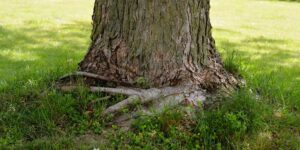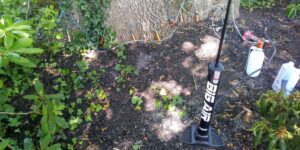If you’ve been putting off your tree care, especially tree pruning, and worry about not being able to get it done before winter arrives, relax. Your trees are in it for the long haul and they’re pretty forgiving about when some types of tree work are done (except pest and disease treatments – there’s only a specific window of opportunity for those services).
So, can trees be pruned in winter? And what about other types of tree work, like tree removal or structural work?
The answer is yes! Most types of tree service work can be done in winter. And when it comes to tree pruning, winter is an excellent choice – for your trees and for your wallet.
Isn’t Winter Too Cold For Tree Pruning?
Winter might be too cold for you, but it’s when most plants and trees are dormant, which makes it an ideal time for pruning.
After trees close up shop in fall and start waiting for spring, they’re good candidates for pruning.
Here’s why winter is a good time to prune trees –
- Sap isn’t running through trees, so trees won’t bleed where they’ve been pruned
- Warm-season insects and pathogens aren’t around, so they can’t attack new pruning wounds
- Deciduous trees are bare, making them easier to evaluate for pruning or shaping
- Trees that need stabilizing or cabling are easier to work on when there aren’t any leaves
- Any hazardous trees can be evaluated or removed before the next winter storm
- It’s less stressful for trees
Overall, winter is when most trees are receptive to pruning. They’re resting after their energy-intensive spring and summer growth, and have stored energy reserves ready for next spring’s bud break. The pests and pathogens that trees fight off all summer are also dormant, so the chance of infection or infestation is almost zero. Pruning is easier for arborists, too, when leaves have fallen and it’s easy to evaluate a tree’s structure and needs.
BONUS: Frozen ground is stable ground. The cranes and large machinery that we use for winter pruning and tree removal won’t damage your lawns or planting areas the way they might in warm weather when the soil is warm and soft. This efficiency translates into less time for each job and more savings for you.
OTHER THINGS ARE SLEEPING, TOO
Pathogens that damage trees, such as fungi, finish their growth cycle in fall when they release their spores. The most common and damaging or fatal fungi in our part of New Jersey include Dutch elm disease and oak wilt. In winter, there’s virtually no danger of fungal spores getting into pruning cuts. It’s the same for the bacteria that spread diseases like fire blight, and for the insects that carry diseases from tree to tree.
BUT (THERE’S ALWAYS A BUT)
You may have some trees and shrubs that you won’t want to prune in winter. Landscape species that flower in early spring are best pruned during the growing season, usually right after they’ve finished flowering.

Spring-flowering trees, such as redbuds, will not flower if pruned in winter
That’s because some tree and shrub species set buds for the following year as soon as the spring blossoms fade. They’re using this year’s woody growth as the foundation for next year’s flowers, so you don’t want to prune off all their hard work and miss out on their showy display.
If you’re not sure what kinds of trees or shrubs you have, ask us! The tree care professionals at Alpine Tree are trained and ready to help you.
ANYTHING ELSE I SHOULD KNOW?
Of course! There’s always more!
Broadly speaking, you can pretty much prune all year ‘round, especially if there’s an emergency such as a broken branch or disease infestation.
Early fall (before trees drop their leaves) is the only season when pruning is not suggested, except for damage or disease. Fall pruning, like all pruning, signals a tree to produce more growth, but any growth that starts in fall will die with the first solid freeze.
Since trees have finished storing their energy reserves at the end of the growing season, when you prune in the fall you’re asking the tree to withdraw from their “savings account” of energy in order to make sprouts and leaves that won’t live long enough to produce an equal amount of replenishing energy. So respect all the work your trees have done over the summer to secure their future, and leave off pruning till it’s most beneficial to them.
It’s also best to avoid pruning maples in late winter or early spring when the sap is running.
Does that mean trees shouldn’t be pruned in summer?
Not at all – some pruning tasks are best done when trees have leafed out. For example, you may not be able to tell how much should be pruned away to open up a view or let more sunlight through until the tree has leaves.
And of course, diseased, damaged, or dead branches should be removed whenever they’re noticed.
Over the long term, proper tree care, including pruning and trimming, will help keep your trees healthy, safe and beautiful. Just remember that there’s no need to wait until next year to get tree work done – winter is a wonderful time for it!
Call or contact us today to see which time of year is best for working on your trees.





